The blood sugar/glucose conversion calculator helps to convert mmol/L (UK standard) to mg/dL (US standard) and vice versa.
Our easy to use blood sugar calculator helps you to get your blood sugar conversion results either in mg/dl used by the American system or in mmol/l used by the British system which is accepted worldwide. Blood sugar conversion is made easy as never before. Please note that 72mg/dl of sugar equals to 4mmol/l of sugar.
What is the difference between mmol/L and mg/dL?
The blood sugar level is calculated with two different units. They are mg/dL (milligrams per deciliter) and mmol/L (millimoles per liter) (
1✔).
mmol/L or Millimoles Per Litre: Is defined as the thousandth of the amount of a drug required to produce a specific effect, also used as abbreviation for millimolar (mM). This unit is used in the UK.
mg/dL: Milligrams per 100 millilitres: Metric utilizing in the United States to measure concentration of glucose in the blood - milligram per decilitre.
A normal non-diabetic human being has blood glucose range of between 4mmol/l and 6mmol/l.
Blood Sugar Conversion Formula
The Medindia Blood Sugar Conversion Calculator provides a straightforward method for converting blood sugar levels between mg/dL and mmol/L.
This simple conversion method lets you easily measure your blood sugar level in mg/dL or mmol/L (2).
- To convert mg/dL to mmol/L, you can divide mg/dL by 18 or multiply with 0.0555 to know your blood sugar level in mmol/L (2✔).
- To convert mmol/L to mg/dL, you can simply multiply mmol/L by 18 to know your blood sugar level in mg/dL (2✔).
Normal blood sugar
Blood sugar level is the amount of glucose present in the blood. This glucose is obtained from carbohydrates in the food and serves as energy to the body. Glucose is carried by blood throughout the body to reach every cell.
Insulin is an important biological factor in maintaining a healthy blood sugar level. insulin is a hormone produced in the pancreas that helps to carry glucose from the bloodstream into cells (
5✔).
Blood sugar level varies depending on the time of the blood test. A blood test can be done before eating (fasting), or at random.
- A normal blood sugar level before eating, fasting for 8 hours after your last meal ranges from 70 to 100 mg/dL (3.9 mmol/L - 5.6 mmol/L). (3✔)
- A normal blood sugar level, when the blood sample is taken at any random time is less than 200 mg/dL (11.1 mmol/L). (4✔)
Ideal Fasting Blood Glucose Levels
Fasting blood sugar level is the amount of glucose present in the blood after fasting without food for 8 to 12 hours.
- A normal blood sugar level is less than 100 mg/dL (6✔).
- When the glucose level is between 100 and 125 mg/dL, you are at the prediabetic stage. This will eventually develop into diabetes when left untreated (6✔).
- A blood glucose level of more than 125 mg/dL is diagnosed as diabetes. You must consult a doctor and take the medication to treat the condition before it worsens (6✔).
- If you are already under treatment and medications, it is necessary to take blood glucose level tests to monitor your blood sugar level (6✔).
High Glucose Levels(hyperglycemia)
Blood glucose levels greater than 125 mg/dL while fasting and greater than 180mg/dL after eating food are diagnosed as hyperglycemia (high glucose levels). A diabetic condition where the pancreas does not produce any or enough insulin to carry glucose in the bloodstream. It can also be due to poor response by your body to the insulin (
7✔).
When hyperglycemia is left untreated, it can cause adverse effects on the body by damaging the eye, kidneys, nerves, heart, and peripheral vascular system.
Hyperglycemia can occur in both type 1 and type 2 diabetes. The major risk factors for hyperglycemia are overweight or obesity, having a family history of type 2 diabetes, gestational diabetes, presence of hyperlipidemia, hypertension, and polycystic ovarian syndrome (
8✔).
Symptoms of high Glucose Level(hyperglycemia)
Hyperglycemia symptoms vary among people with diabetes as many don’t experience any symptoms until their blood glucose level is 250 mg/dL or higher. It is important to monitor your blood sugar levels regularly. Hyperglycemia can develop into diabetes-related ketoacidosis (DKA) when a high amount of ketones makes your blood acidic (
10✔).
Symptoms of hyperglycemia are:- Headache
- Blurred vision
- Increased thirst or hunger
- Weight loss
- Skin infections
- Fatigue
- Frequent urination
Low Blood Glucose Levels (Hypoglycemia)
Hypoglycemia (low blood glucose level) is a diabetic condition with a blood sugar level of less than 70 mg/dL. Mild to moderate hypoglycemia can be treated easily. However, severe low blood sugar levels can be detrimental. It can lead to passing out, coma, or death so it has to be treated immediately.
Hypoglycemia is common in both type 1 and type 2 diabetes. It can be due to the side effects of insulin or other medications taken for the release of insulin from the pancreas. It can have the opposite effect by lowering the blood glucose level. Other causes are not eating enough carbohydrates, fasting too long, and increased physical activity (
9✔).
Symptoms of low blood glucose levels
Low blood sugar levels can be identified with some of the symptoms which can affect your well-being (9). The symptoms can be different for every individual and they are:
- Anxiety or nervousness
- Sweating and shaking
- Getting hungry
- Dizziness
- Irritability or confusion
- Fast heartbeat
- Headache
- Unable to speak clearly
- Seizure and loss of consciousness (severe low blood sugar level)
Methods of Blood Glucose Testing
Blood glucose levels have to be monitored regularly to manage diabetes. There are different methods to measure the blood sugar level with fasting or non-fasting. It can be tested by the individual on their own or get the test done by a professional.
1.HbA1c Test
The hemoglobin A1c test (HbA1c), also known as the glycated hemoglobin test, is used by doctors to measure the average blood sugar level over the past two or three months. The test measures the percentage of red blood cells that are attached to glucose.
The test results are given for the past three months because glucose molecules stick to the hemoglobin until the red blood cells are alive. The shelf life of red blood cells is three months. This test can be used to diagnose type 2 diabetes and prediabetes (
11✔).
2.Continuous Glucose Monitors (CGM’s)
CGM is a sensor placed under the skin. It measures the blood sugar level 24 hours a day. The device has a transmitter to send the measured results to a cell phone or a wearable monitor connected to it. This lets you track changes in the glucose level in real-time (
12✔).
3.Finger prick test
Blood glucose levels are measured using a blood sugar meter, strips, and a needle. A test strip is placed into the meter. The side of your finger is pricked with a needle or lancet. The edge of the test strip is placed near the blood drop. The meter displays the blood sugar level on the screen after a few seconds (
13✔). This test can be done at home.
4.Glucose Tolerance Test (GTT)
The glucose tolerance test measures how the body responds to sugar (glucose). It is also called an oral glucose tolerance test (OGTT). It is used to check for diabetes during pregnancy. This test is specially used to diagnose type 2 diabetes or prediabetes before any symptoms.
A blood sample will be taken when the person has not eaten for at least 8 hours. Then a drink containing glucose (75 grams) is given to the person undergoing the test. The blood sample is taken every 30 to 60 minutes over three hours (
14✔).
FAQs
1. What is the normal blood sugar level 1 hour post-eating?
Blood sugar level attains the peak after 1 hour of having a meal. The ideal blood sugar level after having a meal should be between 120 mg/dL and 140 mg/dL (15✔).
2. Why blood sugar level is high in the morning?
This can be due to the natural process called the Dawn Phenomenon.
Our body releases hormones like cortisol and growth hormone to wake us up and provide energy by increasing blood sugar levels. It can occur in people with or without diabetes. However, diabetic patients are unable to counter the increase due to the poor effects of insulin (16✔).
3. Is it necessary to fast before HbA1c test?
The HbA1c test is a non-fasting test as it does not require you to fast before an Atc test. Since it measures the average blood sugar level over the past 3 months, anything eaten before the test will not affect the results (17✔).
4. When is the best time to take a blood sugar test?
It is ideal to test your blood sugar level before meals. Sometimes it can be done during bedtime when the test is done to diagnose diabetes. You can also check your blood sugar level when you have symptoms of hypoglycemia or hyperglycemia, stress, or after you exercise (18✔).
5. Why the blood sugar level is high after exercise?
After a heavy workout, stress hormones such as adrenaline are produced. Adrenaline stimulates the liver to produce glucose for energy so there is an increase in blood sugar level after you exercise (19✔).
6. Do climatic conditions affect blood sugar levels?
Yes, cold weather can increase blood sugar levels because cold temperatures can stress your body and in response, the body releases stress hormones to provide energy. This increases the blood sugar level in cold climatic conditions (20✔).
7. What are the best foods to lower blood sugar levels?
Consume protein-rich foods like meat and fish, tofu, nuts, eggs, and cheese with carbohydrates like rice to slow down the flow of glucose into your bloodstream (21✔).
8. Can I check my blood sugar level on my own?
Yes, you can measure your blood sugar level by using the continuous glucose monitor (CGM) or finger-prick test. These methods can be done several times a day to track changes in your blood sugar level(22✔).
9. What is my target blood sugar range if I have hypoglycemia?
Your healthy target range is 4 to 7 mmol/L (below 70 mg/dL) before your first meal for the day in both cases of hyperglycemia and hypoglycemia(23✔).
10. Can I get diabetes during pregnancy?
Yes, pregnant women are prone to getting gestational diabetes (GD) as their bodies cannot produce the required amount of insulin due to overweight or obesity. This leads to an increase in blood sugar levels (hyperglycemia). But this condition is temporary and goes away after delivery (24✔).
Recommended Readings on Blood Sugar
Metabolic syndrome risk assessment calculator is a tool that helps determine your risks for heart disease, diabetes and stroke.
What is a blood sugar test? Blood sugar tests are used for diagnosis and management of diabetes. Common tests are HbA1C, fasting blood sugar, oral glucose tolerance and random blood sugar.
HbA1c calculator calculates average plasma and whole blood glucose levels. A1c test tells your average blood sugar level in the past 3 months and helps check whether your diabetes is in control.
Are you a blood donor? If yes use our online calculator to find out when you can donate blood again.
Sugar is known to be the dietary cause for increased risk of several chronic ailments such as diabetes and cancer. Is it coincidence or is it for real?
A continuous glucose monitor is an automated device to measure blood glucose levels seamlessly throughout the day and night to offer better diabetes management.
The blood sugar chart gives you the fasting glucose values and glucose tolerance test values for normal people and people with early diabetes and established diabetes. Also use the calculator to find out if you have diabetes.
The condition of excess glucose level in bloodstream can be regulated by a regular practice of yoga. Yoga helps to control blood sugar levels and promotes health in a person
Diabetes or diabetes mellitus, is an endocrine and metabolic disorder characterized by high blood sugar levels (hyperglycemia) over a prolonged period of time.
Diabetes has replaced every other condition to become the fastest growing lifestyle disease, globally. This disease also impacts children. Some people are more inclined to develop diabetes than others. Do you belong to the high- risk group? Spend 5 ...
The problem of excess weight can be effectively dealt with, by the practice of yoga, which helps to shed unnecessary fat and keep the body in shape and in good health.Yoga - obesity cause
A comprehensive article on diabetes - both Type 1 and Type 2 diabetes, including : causes, signs, symptoms, diagnosis, treatment, facts and a glossary on diabetes.
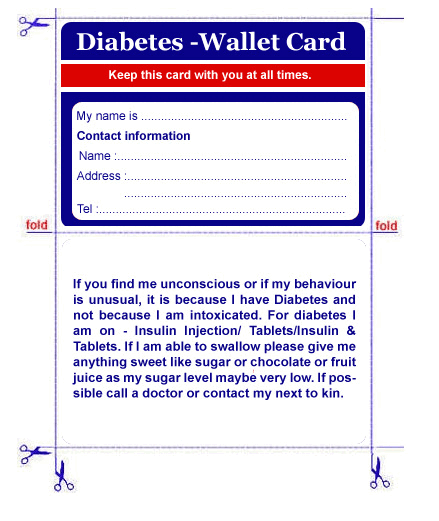


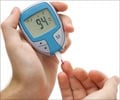
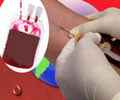

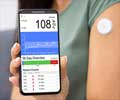
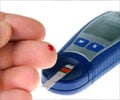

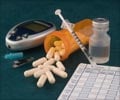



I was in a serious road accident and im a type 1 diabetic could this bring my sugars down to 3.8 when the were sitting at 8.9 2 hours before